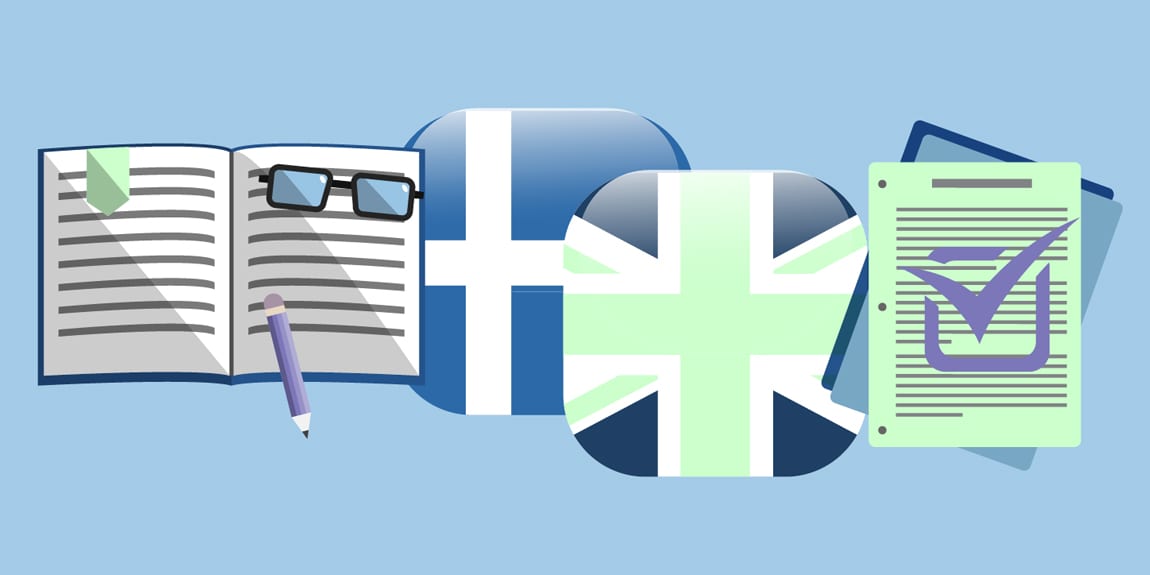We often hear others say that everything is connected on earth. Which is true to some extent. If we trace back our ancestry to the first people on earth, we will come to the conclusion that all of us had the same origin. Cultures started the same way. People practiced certain customs, but those who didn’t agree with that particular set of customs decided to create their separate cultures. Societies got divided, countries were formed, wars were fought, but now that we are searching for peace, we are coming to the conclusion that we share more similarities than differences.
But there is one question we still haven’t answered: how closely are we connected to each other? It is very important to every person to maintain their sense of self. If you meet identical twins, you will realize that despite looking the same and having certain similar habits and behavior patterns, they will have different personalities. No two people can be the same, nor do they want to be. But if we try to diminish our differences too much, we might end up destroying our identities. So, how much of a connection we need to bring peace on earth that doesn’t involve sacrificing our sense of self is the real issue we should be addressing.
It is good to study societies and figure out what’s common between them. It helps us get over our prejudices and give other people the respect we want to receive. But we can do that while maintaining the individual identities of those societies and cultures. We don’t have to merge two culture to bring world peace. We just have to show people that other people are just like them, they have similar needs, and so it is okay to work together instead of hating on each other. But creating a world where people see similarities and still manage to think of things separately is not an easy task. Humans love to associate things with random thoughts, imagine what would they do if we gave them options for making associations.
The problem is clearer to understand when we are talking about languages. There are different families of languages and each language in a sub group of a family share some similarities with the other tongues in the group. Often times, the vernaculars are also mutually intelligible, which might make people wonder why do we need different tongues when one can do the job just as easily. The answer is yes, of course, because languages, like many other things, are a part of people’s identity. Many people have kept their vernaculars alive throughout history as an act of rebellion when their oppressors tried to kill their culture and vernaculars.

Danish Language Translation and Dynamics
Foreign languages encompass a vast array of linguistic diversity, and within this spectrum, Danish translation plays a significant role. The English language, with its distinctive definite article, is widely spoken, but Danish holds its own as a Nordic language with deep historical roots dating back to the 19th century. For a Danish speaker, navigating the intricacies of Danish grammar is second nature, and the language shares similarities with other Nordic languages, particularly Norwegian.
Danish emerged as a national language in the 16th century, and despite its reputation as one of the difficult languages to master, its importance is underscored by the need for accurate English translation, highlighting the rich tapestry of linguistic interplay between these two distinct yet interconnected language realms.
In the domain of translation services, addressing the linguistic needs of the Danish population involves navigating intricacies like the Danish indefinite article and distinct pronunciation. Subtle pronunciation differences contribute to the complexity when translating between languages. Despite these subtleties, mutual intelligibility is maintained, fostering effective communication.
The grammatical structure of Danish, coupled with its status as a minority language, presents unique challenges for translation services, particularly when dealing with immigrant languages seeking integration. Danish shares certain commonalities with German speakers, yet spelling reforms over time have shaped its contemporary form. Emphasizing the significance of a comprehensive Danish-English dictionary becomes crucial in bridging linguistic gaps and ensuring precise translations within the ever-evolving landscape of multilingual communication.
An English-Danish dictionary, enriched with Latin letters, serves as a linguistic bridge between these two languages, both of which boast standard varieties. Beyond contemporary expressions, delving into the linguistic history is akin to exploring a fascinating history book, uncovering runic inscriptions and the influence of Danish colonies. Idiomatic expressions offer glimpses into cultural nuances, emphasizing the depth of language matters in this well-studied linguistic landscape.
Danish, with its unique position among Verb-second languages and Stress-timed languages, presents a fascinating study in linguistic structures. As a well-studied language, it is subject to the guidance of an official language council, ensuring the standardization of expressions while avoiding redundant language usage in its evolution over time.
Norse and Danish Language Unveiling
The Norse language, often referred to as a donor language, has played a pivotal role in shaping the linguistic landscape of various regions. Beyond being the language of religion in historical contexts, it has evolved into diverse current forms with distinctive features. The imperative form, infinitive forms, participial forms, and irregular non-past forms contribute to the rich tapestry of Norse verb conjugations.
The form of pronouns, encompassing nominative form, oblique forms, and even a dual form, reflects the language’s nuanced approach to addressing different grammatical contexts. The verb forms and indefinite form within Norse not only exhibit linguistic intricacies but also offer insights into the historical and cultural dimensions of this influential language.
The native language of the Danish people, Danish, shares linguistic ties with other Norwegian languages, emphasizing a historical and cultural connection dating back to the 9th century. Over the centuries, Danish pronunciation has evolved, reflecting changes from the eighth century to its current form in the 21st century. Danish, considered a standard language, is characterized by its status as both a Verb-second language and a Stress-timed language, shaping the types of sentence material it employs.
The complete grammar of Danish, meticulously studied by linguists like Diderichsen, offers a deep dive into the language’s structure, including pre-verbal nuances and various forms of sentence material, enriching our understanding of its linguistic intricacies from the 17th century to the present day.
The Danish language exhibits a unique interplay of sentence constituents, where simple sentences are crafted with precision. The phonetic spelling of Danish, including the spelling of loanwords, adds to its linguistic richness. Danish, known for forming compound nouns and accommodating irregular nouns, reflects a linguistic tradition that traces back to the runic alphabet.
The challenging sound structure of Danish, encompassing distinctive sounds, contributes to its phonetic diversity. The preverbal field, or foundation field, in Danish syntax establishes the pre-verbal position of elements within a sentence, emphasizing the significance of the subject position. The Danish orthography, subject to occasional reforms, accommodates various Danish varieties, making the language an intriguing subject of study. From linguistic nuances to the practicality of a guest book, Danish exemplifies a dynamic interplay of elements within its linguistic framework.
Danish and English:
Danish is the official tongue of Denmark and is spoken by almost six million people. Denmark and Greenland are the only two countries with a considerable number of Danish language speakers. The number of Danish language speakers in other countries is way too low.

English, however, is one of the most spoken languages in the world. There are more than seven billion people on our planet, out of which 20% speak it. However, it only has over 400 million native speakers. The majority of those who speak it aren’t native English speakers. It is recognized in the constitution of almost 60 states. It is also the dominant tongue on the internet.
Danish and English may have a huge difference in the number of their speakers, but what about the languages themselves, are they closely related or have nothing in common?
How Close is Danish to English?
People often wonder how are Scandinavians so good at speaking English? Because you will rarely come across someone in those countries who doesn’t know English. Not only can they speak the tongue but they are also fluent in it, as well as in their own language. The people of Denmark are known as the most English proficient nation on earth. The reason they are so good at it is not just because it is taught in their schools, or their interest in English media, but also because of the likeness between it and their official language. All the Scandinavian languages are Germanic, so is English.
Danish and English share a lot of phonetic similarities, which means some of their letters make the same sound. The latter has a lot of words that were derived from the Old Norse and Danish is a descendent of Old Norse, so one can imagine the similarities. 1% of Danish vocabulary is made up of English loanwords. In written form, an English speaker can see a lot of familiar words in Danish. The Danish alphabet is pretty similar to the English one. It has three additional letters. They, however, come at the end of the alphabet. But again, there is the question of the extent of the relation between the two languages.
Although, English and Danish share some features, they also have a lot of differences. Danish is a North Germanic language, while English is West Germanic. Despite having influences of Old Norse, English did not originate from it. Danish is mutually intelligible with Norwegian and Swedish and is more closely related to them than English. The connection between English and Danish is not a strong one but it does help the Danes learn English more easily. It is important to remember that same features may not always mean that two vernaculars are mutually intelligible.
Danish and Norwegian Language Ties
Language pairs within the Germanic branch, such as Danish and Norwegian, exhibit fascinating linguistic similarities and differences that reflect their shared heritage. Both languages maintain the concept of grammatical genders, including the masculine gender, which influences the formation of definite forms and the declension of adjectives. The distinction between strong verbs and regular verbs is another common feature, with Danish verbs showcasing patterns that a Norwegian speaker might find familiar.
Throughout the 20th century, both languages continued to evolve, yet they retained core grammatical structures that underline their Germanic roots. This linguistic kinship not only facilitates mutual intelligibility to some degree but also highlights the rich, intertwined history of Scandinavian languages and their development over time.
In modern times, Swedish speakers navigate a language that is rich in grammatical nuances, reflecting its status as a member of the verb-second and stress-timed languages. Language reforms have further shaped Swedish, refining aspects such as the use of neuter forms and the role of non-finite verbs within sentences. Demonstrative pronouns in Swedish, like in many related languages, play a crucial role in sentence structure, emphasizing the specificity of the noun they modify.
Additionally, the language’s syntax is marked by the strategic use of auxiliary verbs, which assist in forming various tenses and moods, and transitive verbs, which require direct objects to complete their meaning. These linguistic elements underscore the dynamic nature of Swedish, showcasing its evolution while maintaining the foundational principles that facilitate communication among its speakers.
Tonal Diversity in Scandinavian
The intricacies of Danish grammar, as detailed by Diderichsen, are highlighted by the nuanced use of reciprocal verbs and their active meanings, which signify a complex interaction between subjects within the sentence structure. These elements emphasize the sophistication of Danish syntax, especially in handling structures before the verb and in crafting subordinate clauses. The architecture of subordinate clauses in Danish, adhering to precise tense and time conventions, showcases the language’s elaborate grammatical framework.
Moreover, the variation in pronunciation between Danish and South-East Norwegian, influenced by distinct letter combinations, underscores the rich phonetic diversity within Scandinavian languages. This variation not only contributes to the linguistic richness of the region but also underlines the subtle distinctions that give each language its unique identity and complexity.
In the complex tapestry of Scandinavian languages, the nuances of the first person singular form offer insight into the linguistic identity of Danish speakers. The Danish sounds, characterized by their unique tonal qualities, are often positioned in the pre-verbal or foundation field, marking a significant aspect of sentence construction that emphasizes the subject’s role. This preverbal position is crucial in Danish grammar, highlighting the speaker’s action or state. Meanwhile, Swedish orthography, with its precise representation of tone accents, presents a contrast to Danish through the use of tone accent transcriptions, which meticulously document the pitch variations inherent in Swedish but less so in Danish.
Despite these differences, both languages share a rich heritage, with Danish people priding themselves on the distinct sounds that set their language apart. The interplay between tone accents in Swedish and the foundational placement of Danish sounds reflects the diverse linguistic landscape in which Danish speakers navigate, bridging the gap between tradition and the linguistic innovations that continue to shape Scandinavian languages.
Norse Roots to Modern Nordic
The Norwegian languages, with their array of dialects, exhibit a fascinating use of the definite article, which, unlike in English, is often suffixed to the noun, a feature that beautifully illustrates the intricate grammatical structures shared across Scandinavian tongues. This morphological trait, alongside the preservation of masculine gender in nouns, reflects the deep historical roots of these languages, traceable back to runic inscriptions that provide the earliest evidence of the Norse linguistic tradition.
Additionally, the influence of Danish pronunciation during periods of political union has left a lasting imprint on Norwegian, especially in written standards. These linguistic phenomena showcase the rich interplay between history, culture, and language in shaping the distinctive characteristics of the Norwegian languages, drawing a vivid picture of their evolution from ancient runes to modern speech.
Danish pronunciation, deeply rooted in the linguistic evolution from the 17th to the 21st century, exemplifies the characteristics of verb-second and stress-timed languages, where the placement of the verb and the rhythmic timing play crucial roles in the spoken form. The pre-verbal or foundation field in Danish, a concept thoroughly analyzed in Diderichsen’s Danish grammar, underscores the language’s systematic approach to sentence structure, particularly evident in the construction of subordinate clauses and the conveyance of tense and time.
This structural foundation supports the active meaning of reciprocal verbs, highlighting actions or relationships mutually affecting the subjects. Moreover, the difference in pronunciation between Danish and South-East Norwegian pronunciation showcases the distinct phonetic developments within Scandinavian languages over the centuries, reflecting both the divergence and interconnectedness of these linguistic cousins.
Danish pronunciation is characterized by its soft consonants, stød (a glottal stop or laryngealization unique to Danish), and vowel sounds that are distinct from other Scandinavian languages like Swedish and Norwegian. These features contribute to the notable difference in pronunciation, especially when compared to the clear vowel sounds and tonal accents found in Swedish and Norwegian.
Yes, Danish is a verb-second (V2) language, meaning that in main clauses, the verb typically comes in the second position, following the subject or a topicalized element. This rule governs the syntactic structure of sentences, making the language’s word order similar to that of German and Dutch, and different from English.
In Danish, subordinate clauses often feature a different word order from main clauses, with the conjugated verb typically moving to the end of the clause. This structure allows for clear differentiation between main and subordinate clauses, affecting the overall flow and complexity of sentences.
Tense and time in Danish grammar are crucial for expressing when an action takes place, with specific verb forms indicating past, present, and future actions. The language uses a combination of verb conjugations, auxiliary verbs, and contextual clues to convey tense and time, allowing speakers to communicate temporal aspects of actions and events accurately.
Reciprocal verbs in Danish are used to describe actions or relationships where subjects perform or experience something mutually. These verbs often require reflexive pronouns to indicate that the subjects are acting upon each other. For example, “at mødes” (to meet) can be used reciprocally to mean that two or more people are meeting each other, illustrating the verb’s active meaning within a sentence.








